Surface-Energy-Driven Tin Whisker Growth on Pure Tin
Abstract
:1. Introduction
2. Experimental Procedure
3. Results and Discussion
3.1. Sn Whisker Growth on Pure Sn System
3.2. In Situ Observation of Sn Whisker Growth
3.3. Microstructure at the Root of Sn Whiskers
3.4. Surface-Energy-Driven Sn Whisker Growth
4. Conclusions
Author Contributions
Funding
Data Availability Statement
Conflicts of Interest
References
- Compton, K.G.; Mendizza, A.; Arnold, S.M. Filamentary growth on metal surfaces—“Whiskers”. Corrosion 1951, 7, 327–334. [Google Scholar] [CrossRef]
- Galyon, G.T. Annotated tin whisker bibliography and anthology. IEEE Trans. Electron. Packag. Manuf. 2005, 28, 94–122. [Google Scholar] [CrossRef]
- Osenbach, J.W.; DeLucca, J.M.; Potteiger, B.D.; Amin, A.; Baiocchi, F.A. Sn-whiskers: Truths and myths. J. Mater. Sci. Mater. Electron. 2007, 18, 283–305. [Google Scholar] [CrossRef]
- NASA. Available online: http://nepp.nasa.gov/whisker/failures/index.htm (accessed on 30 October 2023).
- Eshelby, J.D. A tentative theory of metallic whisker growth. Phys. Rev. Lett. 1953, 91, 755–756. [Google Scholar]
- Frank, F.C. XC. On tin whiskers. Philos. Mag. 1953, 44, 854–860. [Google Scholar] [CrossRef]
- Ellis, W.C.; Gibbons, D.F.; Treuning, R.C. Growth of Metal Whiskers from the Solid, Growth and Perfection of Crystals; John Wiley & Sons: New York, NY, USA, 1958; pp. 102–120. [Google Scholar]
- Xian, A.P.; Liu, M. Observations of continuous tin whisker growth in NdSn3 intermetallic compound. J. Mater. Res. 2009, 24, 2775–2783. [Google Scholar] [CrossRef]
- Subedi, B.; Niraula, D.; Karpov, V.G. The stochastic growth of metal whiskers. Appl. Phys. Lett. 2017, 110, 251604. [Google Scholar] [CrossRef]
- Tu, K.N. Irreversible processes of spontaneous whisker growth in bimetallic Cu-Sn thin-film reactions. Phys. Rev. B 1994, 49, 2030–2034. [Google Scholar] [CrossRef]
- Tu, K.N.; Li, J.C.M. Spontaneous whisker growth on lead-free solder finishes. Mat. Sci. Eng. A 2005, 409, 131–139. [Google Scholar] [CrossRef]
- Dudek, M.; Chawla, N. Mechanisms for Sn whisker growth in rare earth-containing Pb-free solders. Acta Mater. 2009, 57, 4588–4599. [Google Scholar] [CrossRef]
- Pei, F.; Buchovecky, E.; Bower, A.; Chason, E. Stress evolution and whisker growth during thermal cycling of Sn films: A comparison of analytical modeling and experiments. Acta Mater. 2017, 129, 462–473. [Google Scholar] [CrossRef]
- Zhang, Y.; Zhang, P.; He, W.; Sun, Z.M. Tin whisker growth on immiscible Al–Sn alloy. J. Mater. Sci. Mater. Electron. 2020, 31, 1328–1334. [Google Scholar] [CrossRef]
- Xiao, X.; Sachdev, A.K.; Haddad, D.; Li, Y.; Sheldon, B.W.; Soni, S.K. Stress-induced Sn nanowires from Si-Sn nanocomposite coatings. Appl. Phys. Lett. 2010, 97, 141904. [Google Scholar] [CrossRef]
- Crandall, E.R.; Flowers, G.T.; Dean, R.N.; Bozack, M.J. Growth of Sn Whiskers on Semiconductor and Insulator Surfaces. In Proceedings of the 56th IEEE Holm Conference on Electrical Contacts, Charleston, SC, USA, 4–7 October 2010. [Google Scholar]
- Bozack, M.J.; Snipes, S.K.; Flowers, G.N. Methods for fast, reliable growth of Sn whiskers. Surf. Sci. 2016, 652, 355–366. [Google Scholar] [CrossRef]
- Barsoum, M.W.; Hoffman, E.N.; Doherty, R.D.; Gupta, S.; Zavaliangos, A. Driving force and mechanism for spontaneous metal whisker formation. Phys. Rev. Lett. 2004, 93, 206104. [Google Scholar] [CrossRef] [PubMed]
- Suganuma, K.; Baated, A.; Kim, K.S.; Hamasaki, K.; Nemoto, N.; Nakagawa, T.; Yamada, T. Sn whisker growth during thermal cycling. Acta Mater. 2011, 59, 7255–7267. [Google Scholar] [CrossRef]
- Sun, Z.M.; Barsoum, M.W. Alternate mechanism for the spontaneous formation of freestanding Ga nanoribbons on Cr2GaC surfaces. J. Mater. Res. 2006, 21, 1629–1631. [Google Scholar] [CrossRef]
- Sun, Z.M.; Barsoum, M.W.; Zhang, Y.M.; Hashimoto, H. On Equilibrium Ga Intergranular Films in Cr2GaC. Mater. Res. Lett. 2013, 1, 109–113. [Google Scholar] [CrossRef]
- Liu, M.; Tao, J.; Nam, C.Y.; Kisslinger, K.; Zhang, L.; Su, D. Surface-Energy Induced Formation of Single Crystalline Bismuth Nanowires over Vanadium Thin Film at Room Temperature. Nano Lett. 2014, 14, 5630–5635. [Google Scholar] [CrossRef] [PubMed]
- Kosinova, A.; Wang, D.; Schaaf, P.; Sharma, A.; Klinger, L.; Rabkin, E. Whiskers growth in thin passivated Au films. Acta Mater. 2018, 149, 154–163. [Google Scholar] [CrossRef]
- Lee, B.Z.; Lee, D.N. Spontaneous growth mechanism of tin whiskers. Acta Mater. 1998, 46, 3701–3714. [Google Scholar] [CrossRef]
- Vianco, P.T.; Neilsen, M.K.; Rejent, J.A.; Grant, R.P. Validation of the Dynamic Recrystallization (DRX) Mechanism for Whisker and Hillock Growth on Sn Thin Films. J. Electron. Mater. 2015, 44, 4012–4034. [Google Scholar] [CrossRef]
- Baated, A.; Kim, K.S.; Suganuma, S. Whisker growth from an electroplated zinc coating. J. Mater. Res. 2010, 25, 2175–2182. [Google Scholar] [CrossRef]
- Li, C.F.; Liu, Z.Q.; Shang, J.K. The effects of temperature and humidity on the growth of tin whisker and hillock from Sn5Nd alloy. J. Alloys Compd. 2013, 550, 231–238. [Google Scholar] [CrossRef]
- Tian, S.; Cao, R.; Zhou, J.; Xue, F.; Liu, Y.; Zhang, P.; Sun, Z.M. A comparative study on the growth behaviors of Sn whiskers and hillocks in a Sn-Al alloy coating under different environments. J. Alloys Compd. 2021, 853, 157101. [Google Scholar] [CrossRef]
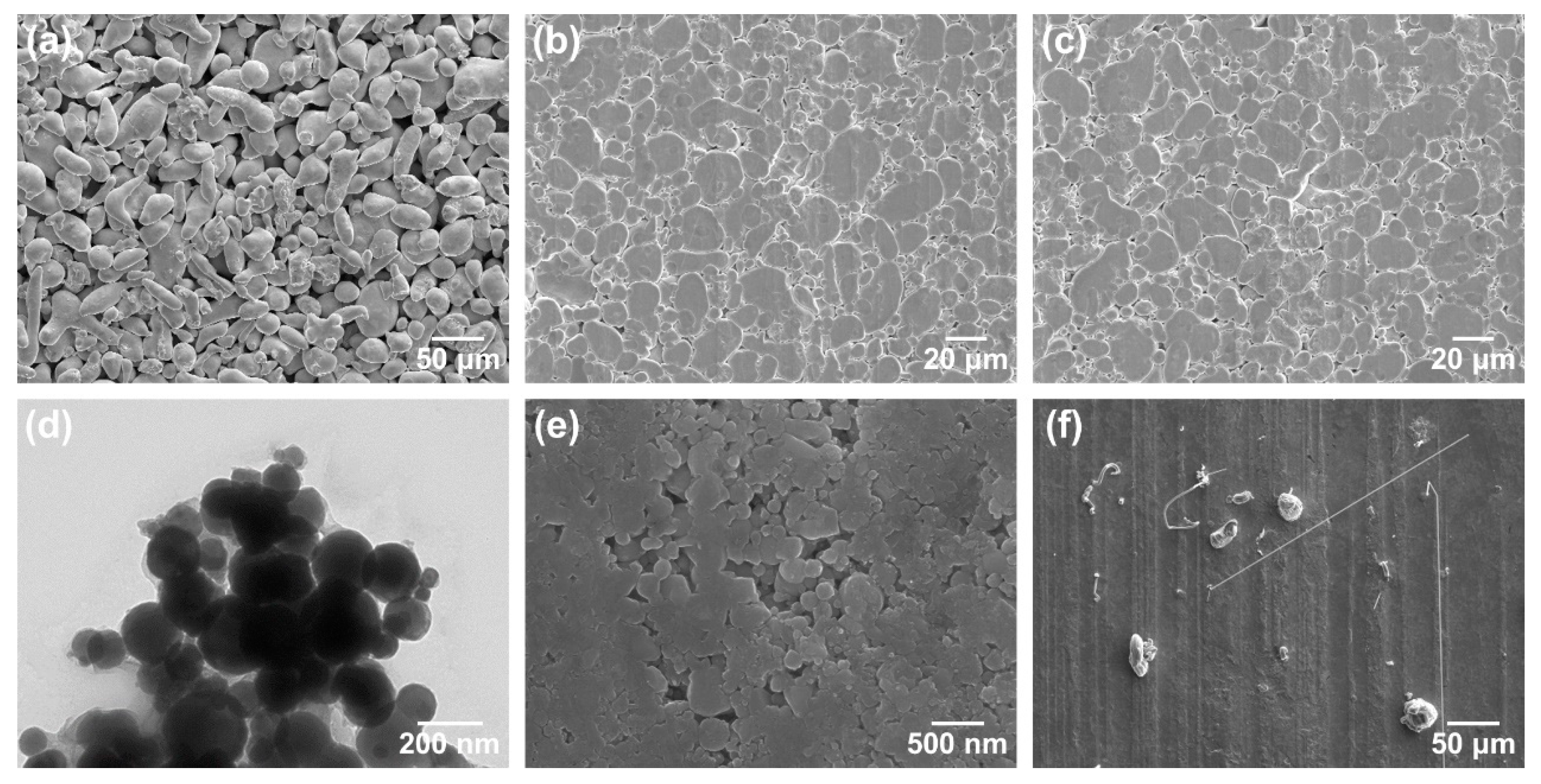
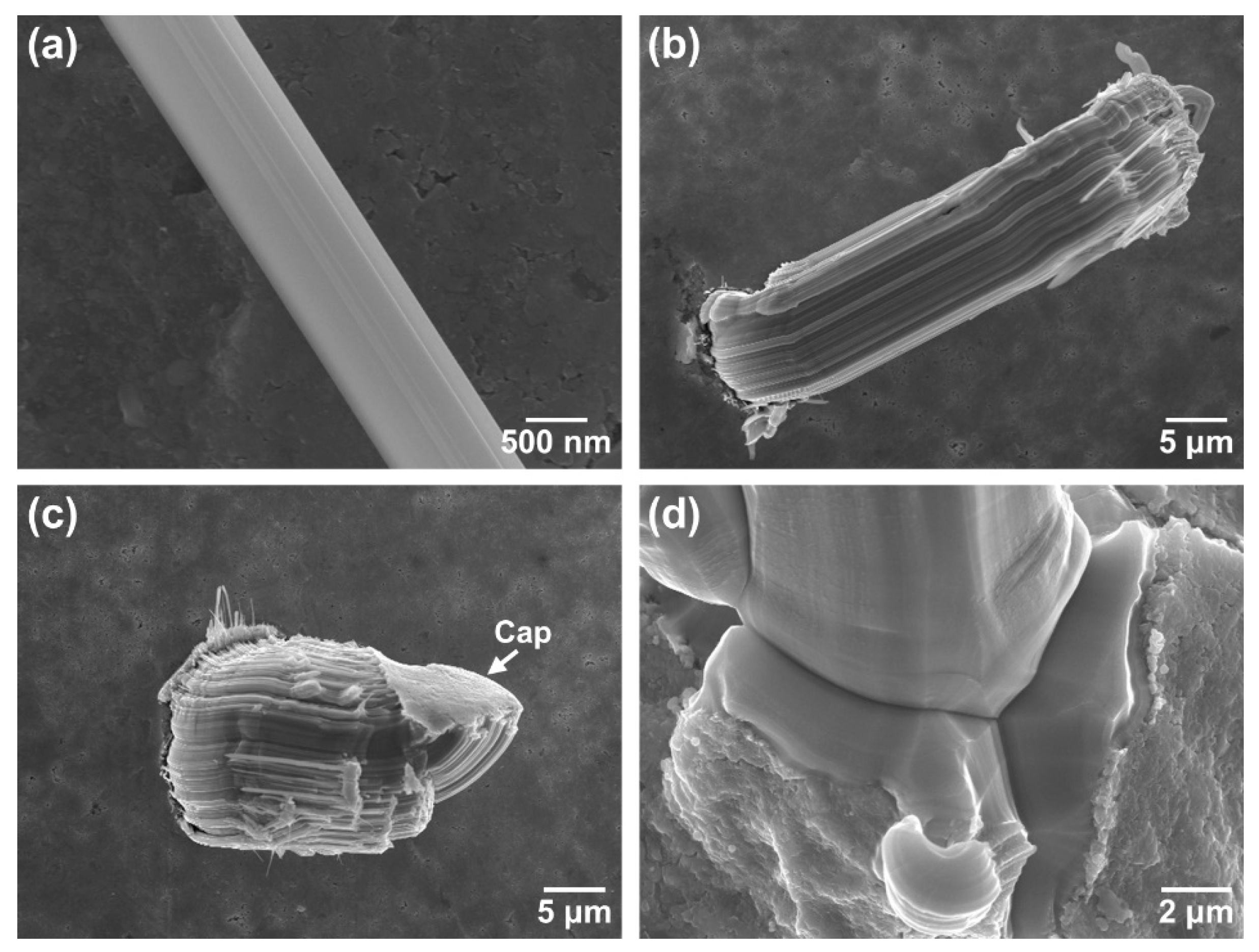
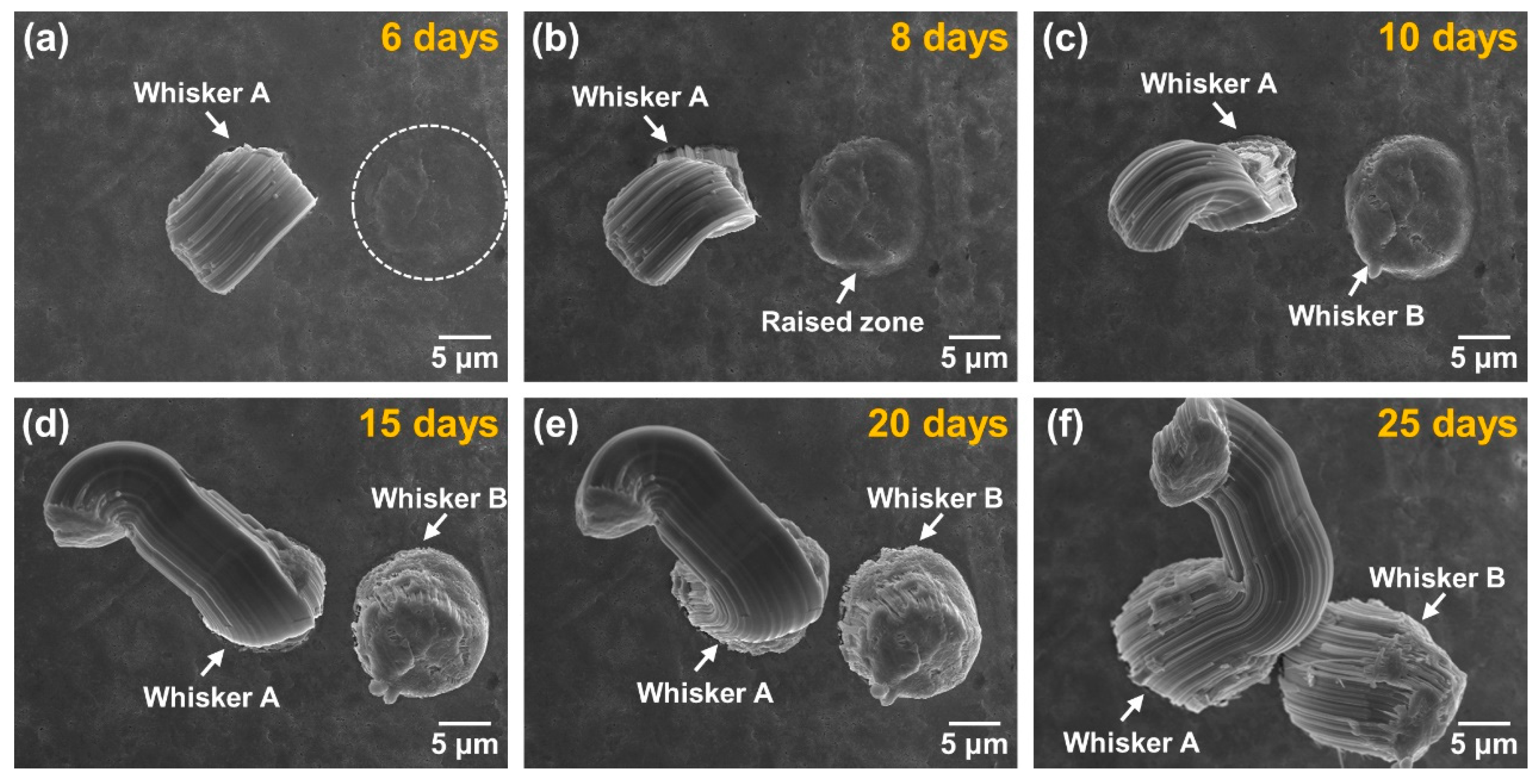
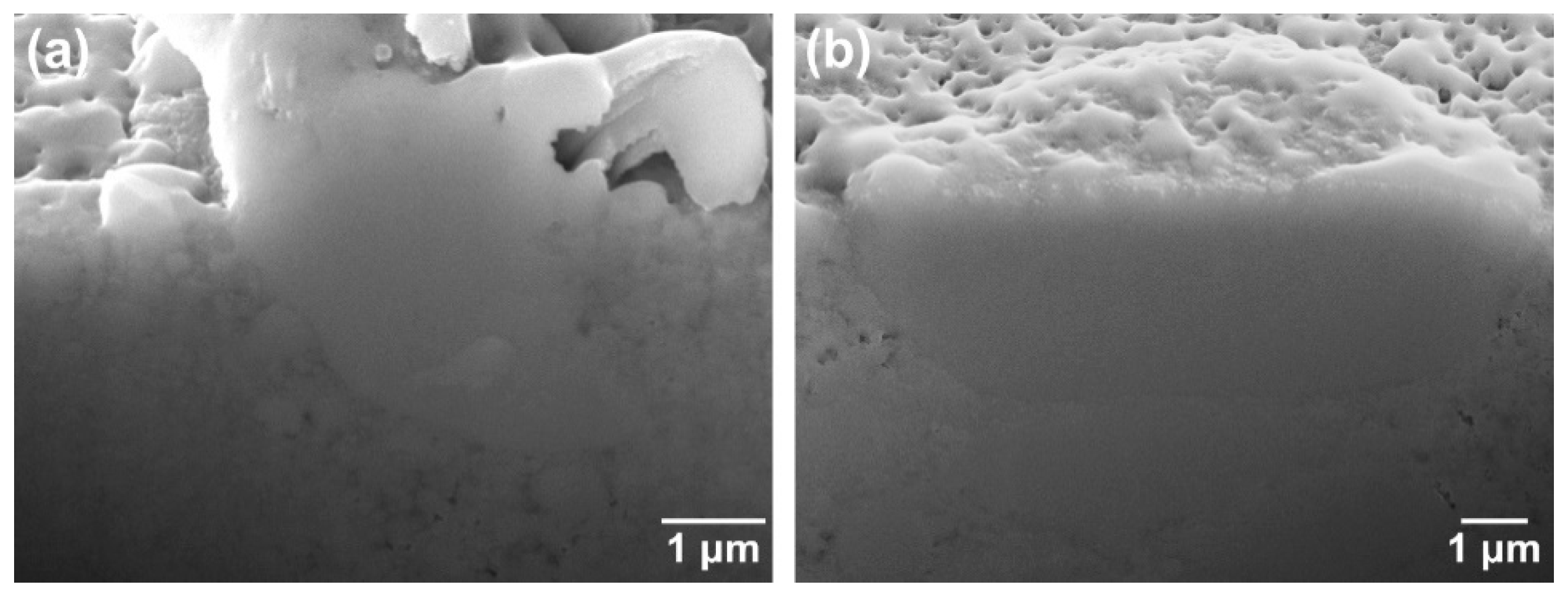
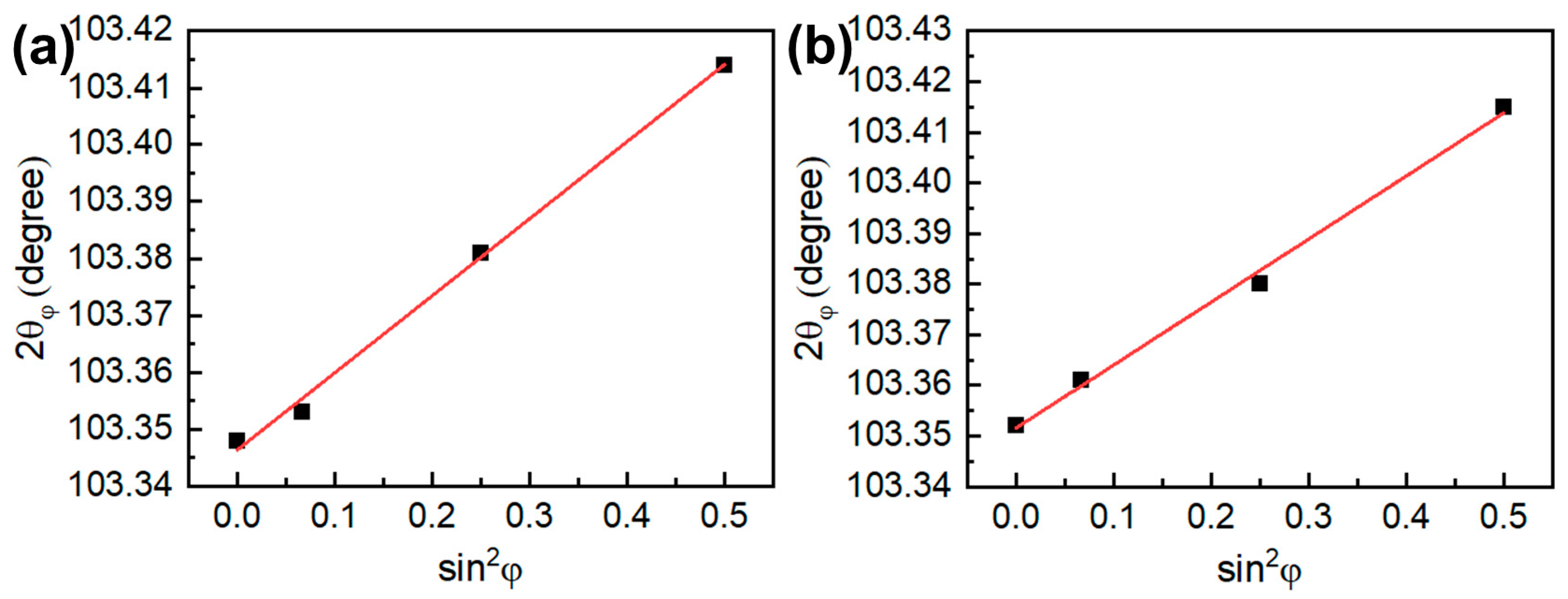
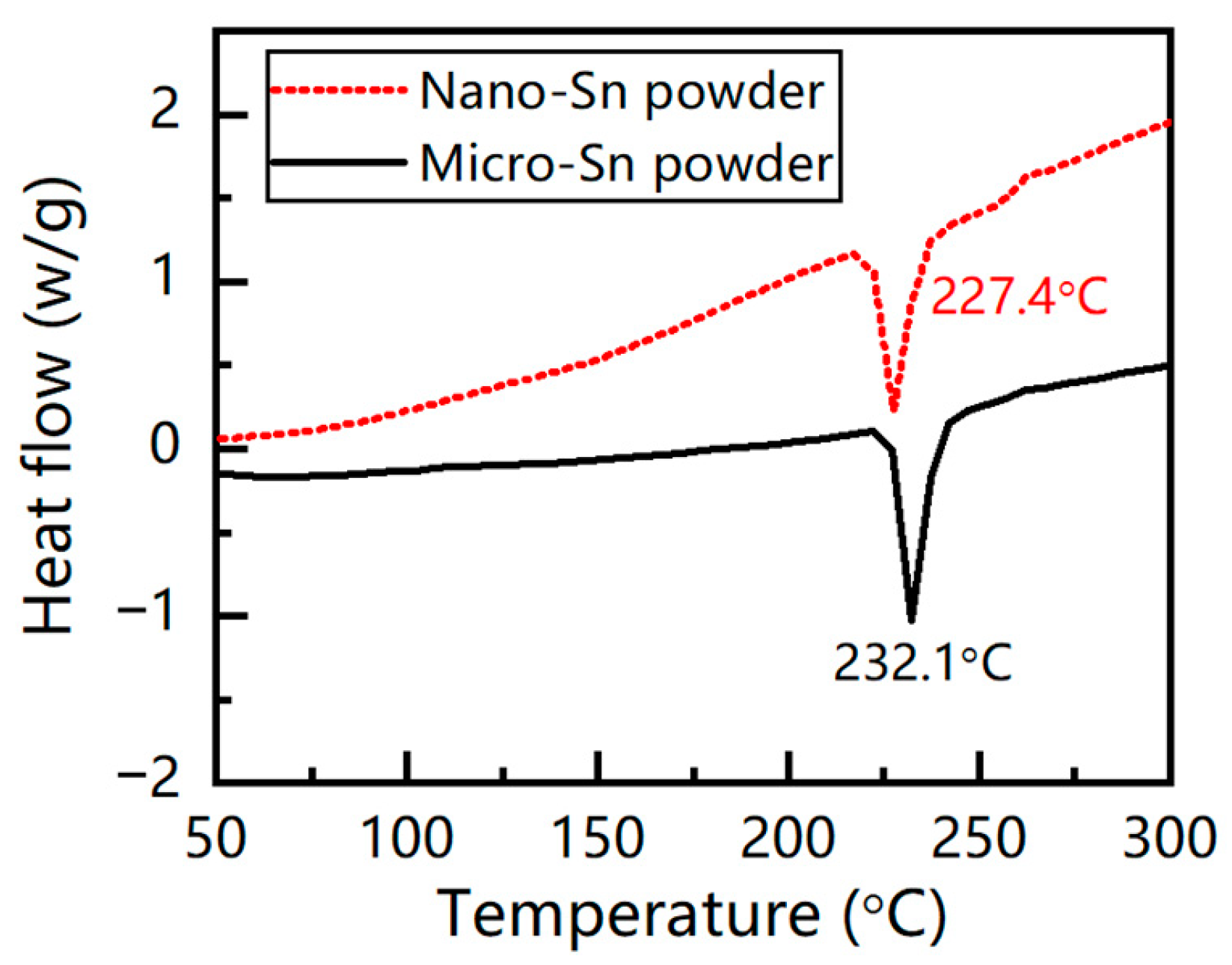

| Sn | Al | S | Fe | Ni | Cu | Zn | As | Ag | Cd | Sb | Pb | Bi | |
|---|---|---|---|---|---|---|---|---|---|---|---|---|---|
| Micro-Sn | 99.549 | 0.050 | 0.034 | 0.024 | 0.066 | 0.038 | 0.036 | 0.038 | 0.046 | 0.032 | 0.027 | 0.035 | 0.025 |
| Nano-Sn | 99.946 | 0.006 | 0.003 | 0.004 | 0.007 | 0.005 | 0.003 | 0.005 | - | 0.004 | 0.008 | 0.003 | 0.006 |
Disclaimer/Publisher’s Note: The statements, opinions and data contained in all publications are solely those of the individual author(s) and contributor(s) and not of MDPI and/or the editor(s). MDPI and/or the editor(s) disclaim responsibility for any injury to people or property resulting from any ideas, methods, instructions or products referred to in the content. |
© 2023 by the authors. Licensee MDPI, Basel, Switzerland. This article is an open access article distributed under the terms and conditions of the Creative Commons Attribution (CC BY) license (https://creativecommons.org/licenses/by/4.0/).
Share and Cite
Liu, Y.; Huang, M.; Chen, Y.; Liu, Y.; Zhu, Y.; Cui, L. Surface-Energy-Driven Tin Whisker Growth on Pure Tin. Crystals 2023, 13, 1643. https://doi.org/10.3390/cryst13121643
Liu Y, Huang M, Chen Y, Liu Y, Zhu Y, Cui L. Surface-Energy-Driven Tin Whisker Growth on Pure Tin. Crystals. 2023; 13(12):1643. https://doi.org/10.3390/cryst13121643
Chicago/Turabian StyleLiu, Yushuang, Miaoyan Huang, Yue Chen, Ying Liu, Yumeng Zhu, and Limin Cui. 2023. "Surface-Energy-Driven Tin Whisker Growth on Pure Tin" Crystals 13, no. 12: 1643. https://doi.org/10.3390/cryst13121643
APA StyleLiu, Y., Huang, M., Chen, Y., Liu, Y., Zhu, Y., & Cui, L. (2023). Surface-Energy-Driven Tin Whisker Growth on Pure Tin. Crystals, 13(12), 1643. https://doi.org/10.3390/cryst13121643





